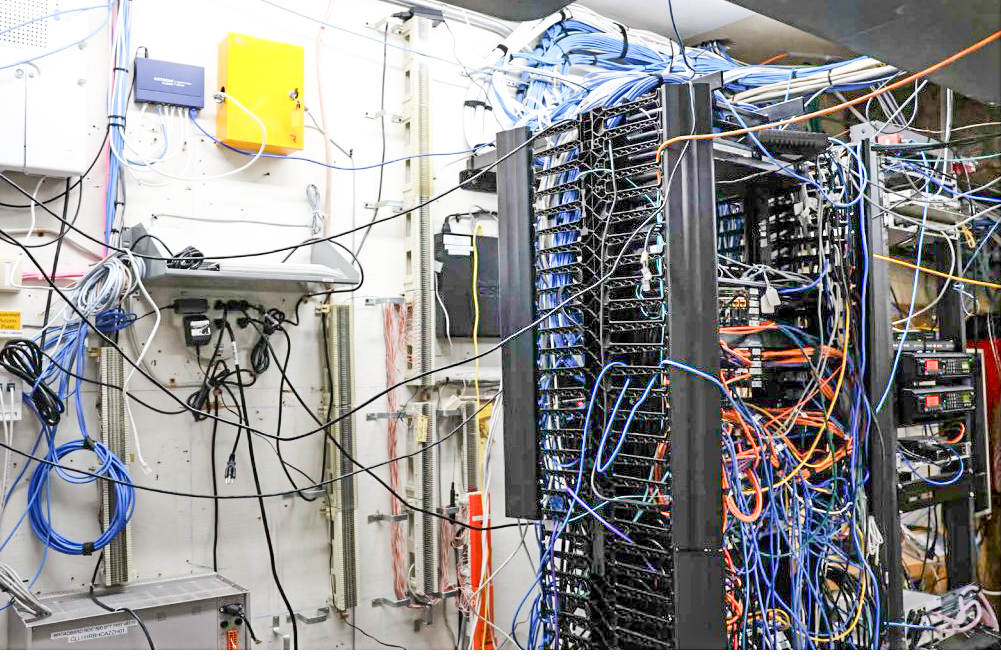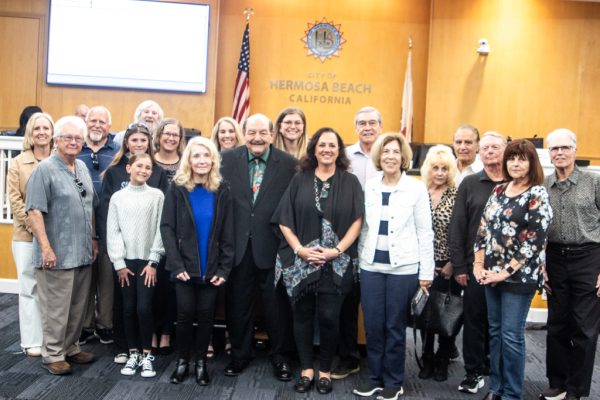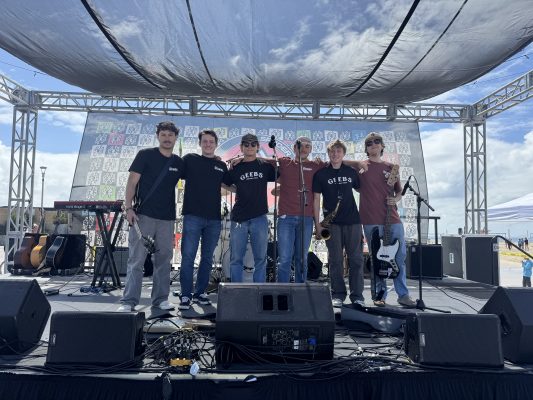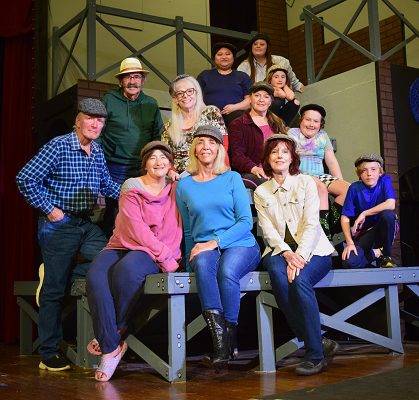by Kevin Cody
“Why do cops like donuts?” Hermosa Beach Police Chief Paul LeBarron asked the approximately 50 residents attending the Civic Center open house last Wednesday, October 24. The chief’s answer was more factoid than funny, but it was the evening’s most light-hearted moment.
Answer: In decades past, cops on night shifts wrote their reports in the field, and donut shops were the only places open 24 hours.
The open house was the first in a planned, 12- to 18-month long series of “civic engagements” to gauge community support for a new or renovated Civic Center. To coordinate the effort the council approved retaining community outreach consultant Lee Andrews Group last February, at a fee not to exceed $179,380, by a 3 to 2 vote. Mayor Dean Francois and Councilmember Rob Saemann contended retaining the consultant was premature.
The chief’s donut story opened his remarks on why Hermosa’s police station doesn’t meet today’s policing needs. The Civic Center was built in 1965.
“We didn’t need to refrigerate DNA evidence 70 years ago. We didn’t need computer stations with multiple monitors for video training and coordination with other law enforcement agencies,” he said.
The city has obtained a $1 million federal grant to build a “real time crime center,” he noted. The center will facilitate responses to crimes, and, also, natural disasters. But the city’s Emergency Operations Center (EOC) is across the street from the police station in the Community Theater building. It is removed from police operations not just by distance, but by the fact its computers rely on wi-fi hotspots for internet connectivity because it doesn’t have ethernet links to the city’s local area network.
Photo taking wasn’t permitted during the Civic Center open house. But a photo in the open house PowerPoint presentation of the police department’s IT (Information Technology) room showed a server cabinet that IT experts would call a “rats nest” because of its jumbled cables and power cords.
Residents on the Civic Center tour saw a similar IT room in the City Hall basement. Except it did not appear to have a server cabinet. Its half dozen computers were lined up on the basement floor beneath a ceiling that staff says leaks because the IT room is beneath the Civic Center’s interior courtyard, which is open to the sky. A tarp is spread across the courtyard to catch condensation.
Touring residents learned the Civic Center’s technical deficiencies extend to the commonplace. Low-hanging fluorescent lights on the City Hall’s second floor are covered because employees complained the lights trigger migraines. Participation in the Great Shakeout Earthquake Drill two weeks ago was canceled upon realization the Civic Center doesn’t have a fire alarm to warn employees to evacuate. Nor, a staff member noted, does it have fire sprinklers.
Public Works Director Joseph SanClemente told the residents his largest number of work orders is for Civic Center maintenance. The Civic Center plumbing and electrical systems are beyond economic repair, he said. On October 2, the fire department was called to extinguish an electrical fire at the Community Services Building on Valley Drive, he said.
The fundamental problem with the current Civic Center, City Manager Suja Lowenthal said, is lack of space. Residents touring the Civic Center saw cardboard file boxes stacked atop file cabinets and in corridors throughout city offices.
Lowenthal told attendees at the open house the current Civic Center facilities have 58,000 square feet. The Civic Center needs 76,000 square feet to function efficiently, she said.
Chief LeBarron did concede his department has adequate space in its jail, which has eight cells.
They are rarely at capacity, he said, because under the Los Angeles County Superior Court’s Pre-Arraignment Release Protocols (PARPs) arrestees in non-violent crimes are not jailed. ER












$179,380 is not being spent “to gauge community support. ” It is bing spent to gaslight residents on the magantude of problems with our current City Hall and to sell us a new one. 70 years ago you might not need to refrigerated DNA, but you had 100’s of thousands of documents, pictures and other items taking up lots of space. Now those same materials fit on a thumb drive. In the last 70 years numerous stenographers, large typewriters and reams of paper have been replaced by laptop computers. 70 years ago every interactons with the City was in person. Now in person visits are seldom necessary and are being discouraged. That $179,380 would have been better spent address the needs of the building instead of the desires of the City Manager.